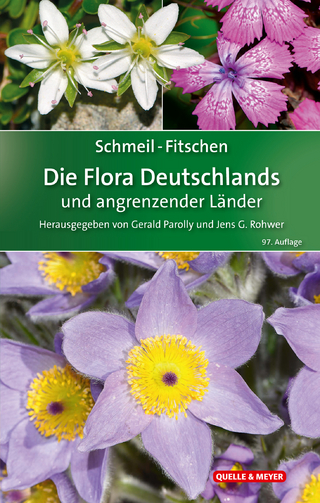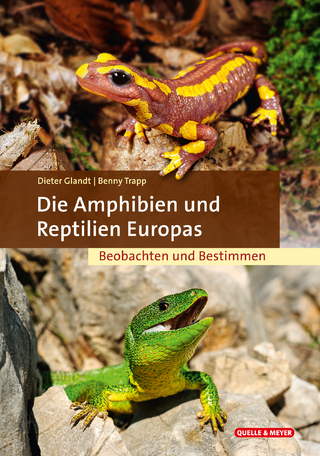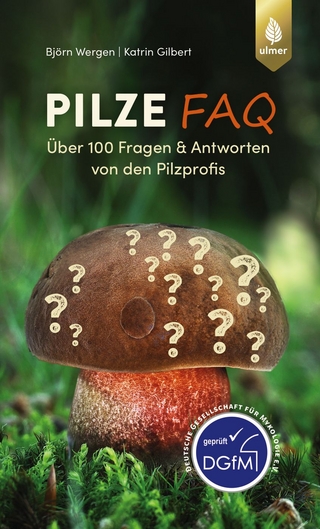
Satellite Remote Sensing for Conservation Action
Cambridge University Press (Verlag)
978-1-316-51386-6 (ISBN)
Satellite remote sensing presents an amazing opportunity to inform biodiversity conservation by inexpensively gathering repeated monitoring information for vast areas of the Earth. However, these observations first need processing and interpretation if they are to inform conservation action. Through a series of case studies, this book presents detailed examples of the application of satellite remote sensing, covering both aquatic and terrestrial ecosystems, to conservation. The authors describe how collaboration between the remote sensing and conservation communities makes satellite data functional for operational conservation, and provide concrete examples of the lessons learned in addition to the scientific details. The editors, one at NASA and the other at a conservation NGO, have brought together leading researchers in conservation remote sensing to share their experiences from project development through to application, and emphasise the human side of these projects.
Allison K. Leidner is a conservation biologist and currently works at NASA Headquarters in Washington, DC, for the Earth Science Division. She leads activities within the Biodiversity and Ecological Forecasting Programs, which support the use of remote sensing for basic research and decision-support applications. She also coordinates a variety of climate assessment activities for NASA. Her former research program focused on the ecology and conservation of rare and endangered species. In 2014, she received a NASA Special Service Award for her efforts related to the development of the Third National Climate Assessment. She is contracted to NASA via ASRC Federal. Graeme M. Buchanan is a Principal Conservation Scientist at the Royal Society for the Protection of Birds (the UK BirdLife Partner). He has a background in field ecology and ornithology and he has been using remote sensing data for a wide variety of purposes to inform conservation decision making and prioritisations in the UK and globally for around fifteen years. He is on the British Ornithologist's Union Council, and is an editor for the journals Bird Conservation International and Remote Sensing in Ecology and Conservation.
1. A brief introduction to conservation and conservation remote sensing Graeme M. Buchanan and Allison K. Leidner; 2. Introduction to remote sensing for conservation practitioners Andreas Brink, Cindy Schmidt and Zoltan Szantoi; 3. Satellite remote sensing for the conservation of East Asia's coastal wetlands Nicholas J. Murray; 4. Global forest maps in support of conservation monitoring Samuel Jantz, Lilian Pintea, Janet Nackoney and Matthew Hansen; 5. Wildfire monitoring with satellite remote sensing in support to conservation Ilaria Palumbo; 6. Ecosystem functioning observations for assessing conservation in the Doñana National Park, Spain Paula Escribano and Néstor Fernández; 7. Predicting mule deer (Odocoileus hemionus) harvest in real-time: Integrating satellite remote-sensing measures of forage quality and climate in Idaho, United States Mark Hebblewhite, Mark Hurley, Paul Lukacs and Josh Nowak; 8. Lessons learned from WhaleWatch, a tool using satellite data to provide near real-time predictions of whale occurrence Helen Bailey, Elliott Hazen, Bruce Mate, Steven J. Bograd, Ladd Irvine, Daniel M. Palacios, Karin A. Forney, Evan Howell, Aimee Hoover, Lynn DeWitt, Jessica Wingfield and Monica DeAngelis; 9. The evolution of remote sensing applications vital to effective biodiversity conservation and sustainable development Karyn Tabor and Jennifer Hewson; 10. Synthesis Allison K. Leidner and Graeme M. Buchanan.
| Erscheinungsdatum | 03.10.2018 |
|---|---|
| Zusatzinfo | Worked examples or Exercises |
| Verlagsort | Cambridge |
| Sprache | englisch |
| Maße | 155 x 235 mm |
| Gewicht | 690 g |
| Themenwelt | Sachbuch/Ratgeber ► Natur / Technik ► Naturführer |
| Naturwissenschaften ► Biologie ► Ökologie / Naturschutz | |
| Naturwissenschaften ► Geowissenschaften ► Geografie / Kartografie | |
| ISBN-10 | 1-316-51386-6 / 1316513866 |
| ISBN-13 | 978-1-316-51386-6 / 9781316513866 |
| Zustand | Neuware |
| Haben Sie eine Frage zum Produkt? |
aus dem Bereich


